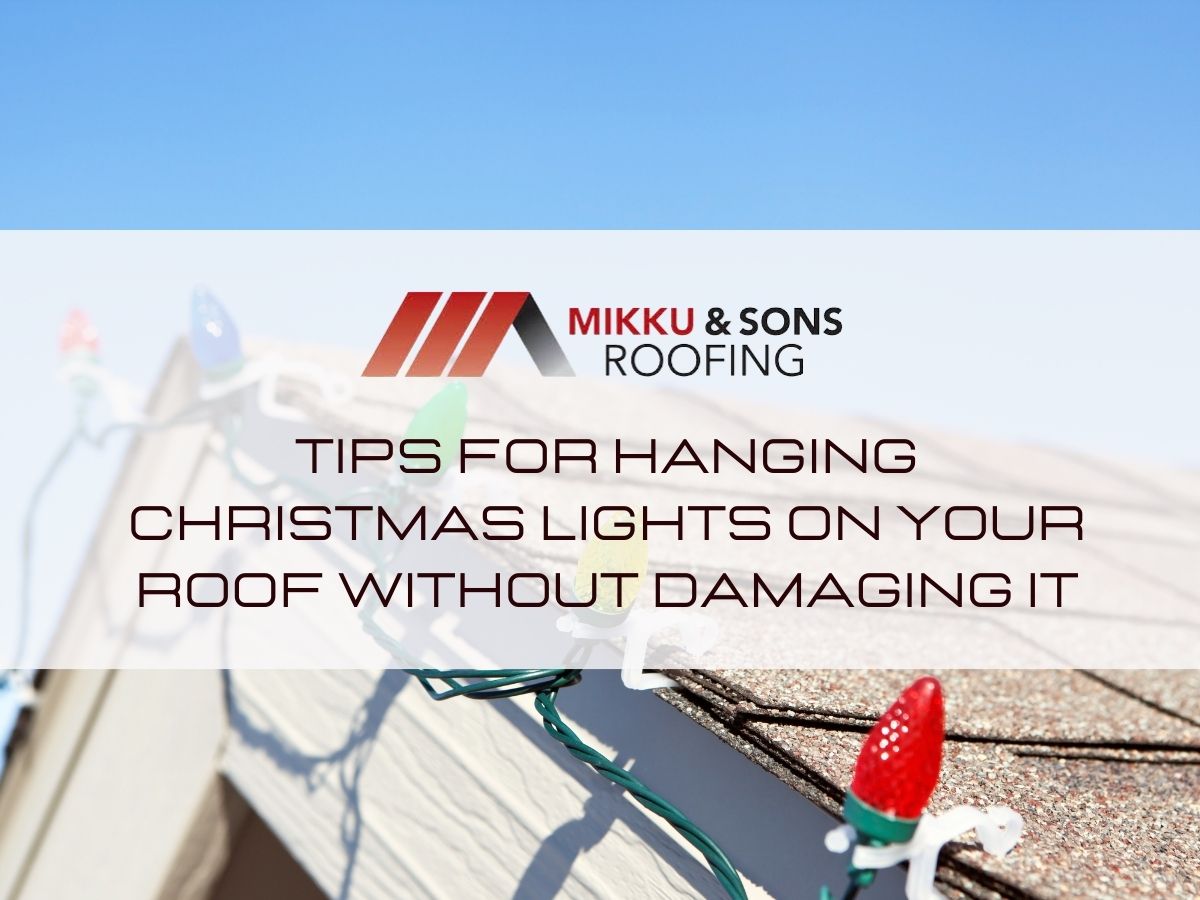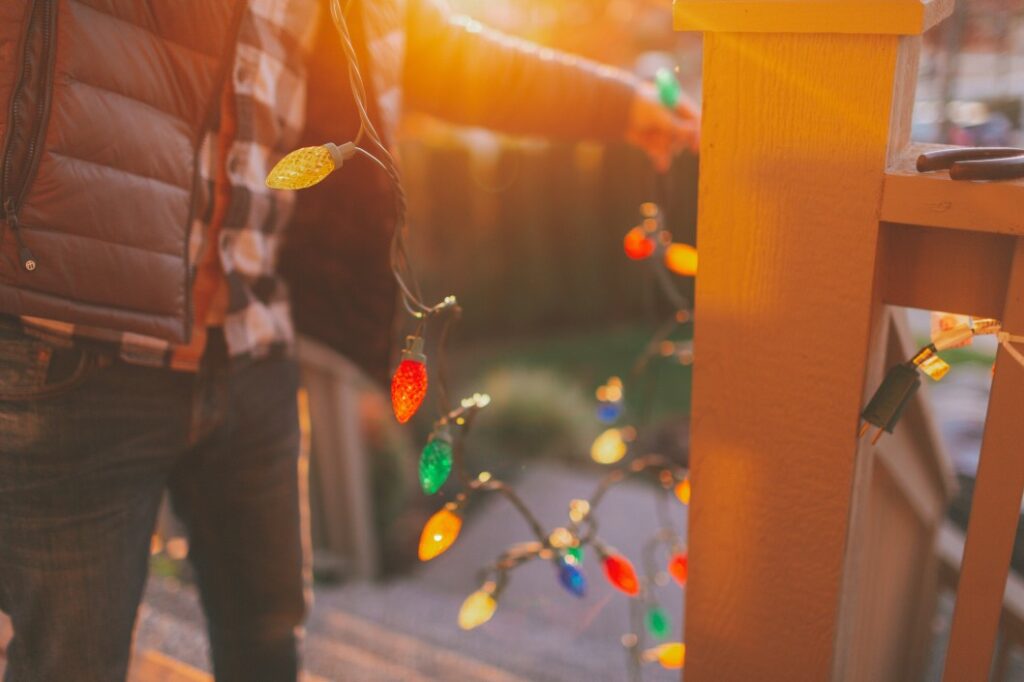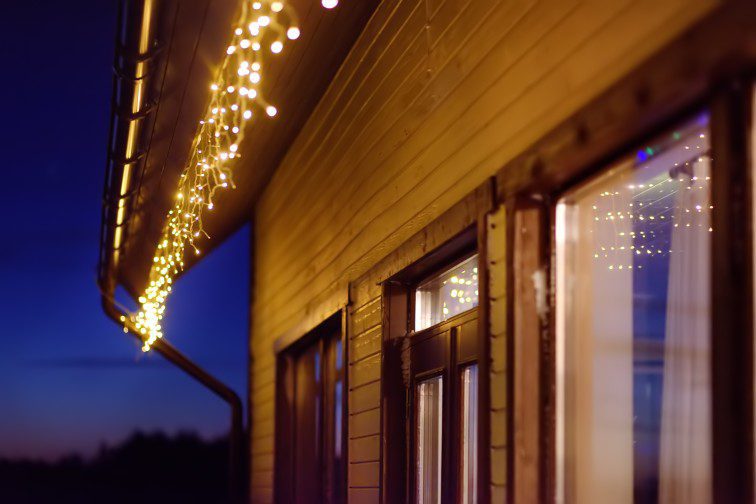

Before hanging your Christmas lights up on the outside of your house to celebrate the holiday season, check whether your roof and the areas around it are ready to handle the extra weight.
Once you’ve made sure your roof is ready to support the weight, you can begin hanging Christmas lights.
Using nails, staples, or screws to attach Christmas lights to a roof will cause damage to the shingles and other roof components.
Leaks can be caused by even the tiniest holes in the shingles. Small holes in gutters and decay in the fascia board might let water get into places it shouldn’t. Before hanging your Christmas lights, brush up on your knowledge of the various components of a
The solution lies in using non-marking plastic clips that attach to the gutter with ease yet leave no trace behind.
Using clips, you won’t have to worry about puncturing your roof to fit a massive display with as many fasteners as possible.
The drip edge or shingle should be fastened with clips to avoid puncturing the sealant binding to the shingle below. Be careful not to raise your shingles and break the sealant bond with the shingle below.
Adhesive strips can be used to attach the clips to your house’s vertical face. Please don’t go through the skin.

First and foremost, you should check that you have enough light strands to illuminate the area you want to light up adequately and that they are in good operating order. Of course, before you purchase anything, check to see whether it’s rated for outdoor use.
Calculate how many feet of Christmas lights you have using a scaled-down design. Find any fraying by using a magnifying lens. It’s a great time to repair any broken or missing strands or bulbs. Throw away any strands that don’t meet your standards.
Ensure you have enough plastic clips or hooks to connect the lights to the eaves or gutters before placing your lights on the roof. Plastic is far less likely to harm the roof than nails or metal hooks are.
Place outside extension cables where they’ll be needed. Shingles, eaves, and gutters are good places to put the light strands. Do not hang anything too heavy next to the lights to protect your roof.
If you locate gutters or fixtures that are excessively loose, get them fixed before putting lights on them. Otherwise, they may become much looser during the severe winter weather or tumble down, causing all of your holiday decorations to be lost.
Don’t use nails that will pierce your roof with their sharp edges. The integrity of the roof’s structure is critical since even small cracks may grow into larger ones, allowing rainwater to flow in. Plastic lighting clips are easy to find and cheap to buy.
These clips may be seen in most hardware shops’ lighting and tree displays. Plastic zip ties are another option that won’t damage your roof fittings.
These hooks are all you need to attach to your fishing line. The clip is attached to your gutters using a hook.
These clips similarly connect to the line of the lights but acquire a firm grip. They are great for icicle or rope lights that don’t have bulbs you need to orient. You install them by looping them over the edge of the gutters.
To ensure absolute accuracy, these clips are secured to the bulb itself. Because they compel all lights to aim in the same direction, they provide a cleaner appearance
Determine if your lights should be pointed up, down, or out before purchasing. As a bonus, some of these clips don’t let you remove the light unless you remove the bulb, which is a lot of effort and does make the light more secure in windy places.
You may attach these clips to your gutters or your drip edge by hooking them.
For the most part, professional Christmas light installers prefer to utilize these clips since they demand them to work towards the roof’s peak.
These clips are installed perched on the roof’s apex and hold on to the shingle’s edge.
Other kinds of Christmas light roof clips should be avoided if you want to keep your roof in good condition.
Lifting your shingles to hang lights isn’t worth the danger. Deck clamps, designed for railings, should also be avoided since they won’t hold a roof securely.

Tread cautiously if you’re walking on your roof. This shouldn’t take more than a few short steps.
Weakly walking may lead to gutter damage and make gutter cleaning more difficult. It may also lead to leaks in other parts of the home, allowing water to seep into the furnishings and flooring underneath.
While using a staple gun to hang your Christmas lights may seem like the most convenient option, it’s important to avoid puncturing your shingles with staples, nails, or screws. When you remove them, you’ll leave holes in your roof decking, increasing the likelihood of rot.
Lights may be stapled to your roof’s perimeter (the eaves), but make sure you don’t fasten straight through the lighting strands or electrical cables to avoid faulty lights and, even worse, the possibility of an on-the-job fire.
2. Try using plastic clips when hanging Christmas lights.
Many plastic clips may be attached to your roof’s gutters, shingles, or eaves without hurting them. Depending on the roof and the lights, different clips may be used.
Christmas lights should not be attached to the roof’s shingles. Connecting them to your gutters or eaves is preferable.
There is a flat roof and a wall that protrudes over the top of it. In addition, there are little holes for attaching the Christmas lights to the ceilings. If your property has a flat roof, we recommend Parrot Clips.
3. Avoid walking on your roof.
It’s preferable to avoid going up on the roof and decorate the areas that are easily accessible by ladder. Nonetheless, if you must go onto the rooftop, be sure to heed these precautions to keep it in good condition:
Wear shoes with soft soles, such as sneakers, and take your time walking. Under bright sunlight, avoid walking on roof shingles.
On a tile roof, wear soft shoes and place your feet on two peaks (the bump) rather than in the valleys between the tiles.

When removing the lights from their clips, it may be simpler to pull them down or yank them, but this may cause harm to both your property and the pricey Christmas lights if you’re not careful. Make the additional effort to remove each clip to avoid future injury properly.
It’s done! You don’t have to worry about damaging your house this Christmas season if you take a few additional precautions.
Instead of nails or staples, use plastic clips. Plastic clips are the most convenient method to suspend Christmas lights from roof rafters. Even if you can staple them down, it will take longer to remove them after the holidays if you do so.
When stringing Christmas lights, utilize plastic clips wherever feasible. Plastic clips that attach to your house’s gutters, shingles, or eaves without hurting them are available. Specific roof systems and Christmas lights have special clips.
Lights may be attached to your shingles using clips if you don’t have gutters. Both applications may benefit from clips. Some light-clip kits include a pole for hanging the lights.
There are a few methods to hang Christmas lights without a ladder. The first is a basic solution, a light-hung pole. Connect the clip to the lights to utilize these poles, then insert the clip in the pole’s grip. Then, you extend the arm and hook the clip over the gutter.
